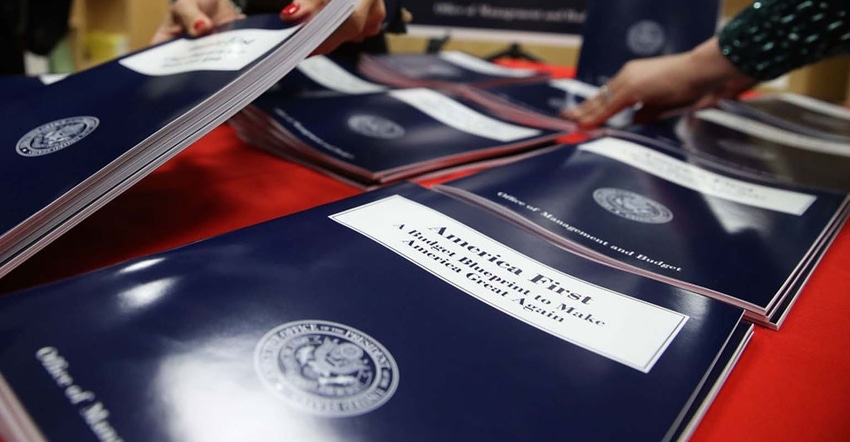
by Michelle Jamrisko
The Trump administration sees the U.S. economy achieving the rosiest of scenarios over the next decade -- a surge in growth that doesn’t spark a worrisome jump in inflation or tighten the labor market any further.
Economic growth is projected to climb by 2020 to 3%, the Trump administration’s oft-stated target, according to assumptions published Monday in the White House’s budget proposal. At the same time, the unemployment rate will rise only modestly -- to 4.7% in the same year -- and inflation, based on the consumer price index, will be 2.6% this year and 2.3% each year for the next decade.
The tallies mark the first set of such assumptions published by the Office of Management and Budget under director Mick Mulvaney, whose administration has consistently made the case that tax reform and deregulation would help lead the way for a surge in demand. While many economists are already skeptical that 3 percent growth can be sustained over a long period, they’re likely to recoil further over the idea that expansion can accelerate without lowering unemployment or making prices rise faster.
The very modest uptick in joblessness means that the administration may be betting on a whole lot more slack -- workers currently on the sidelines of the labor market -- who will be available to pick up the new jobs needed to respond to demand. For inflation, the budget gurus also may be assuming either that there’s enough slack to keep prices in check if growth picks up, or that the Federal Reserve will raise interest rates sufficiently, which would also keep unemployment from falling too far.
Previously, under the Obama administration, OMB saw a similar path for inflation and a slightly less optimistic one for unemployment. Projections published in December, and based on data available as of Nov. 9, showed the agency penciling in 2.3% each year through 2027.
The Trump budget has unemployment slated to be little changed through 2019 and only rise 0.1 percentage point in each of the two ensuing years -- similar to the medium-run assumptions made in December.
The growth estimates, however, are a clear departure from six months ago and defy most current economic thinking by assuming expansion operates almost independently from the other two factors.
Growth Acceleration
GDP, adjusted for prices, is expected to accelerate to 3% within three years, versus the Obama White House’s estimate that it would ease to a 2.2% pace by 2019. In each release, the growth rate is little changed from 2020 through 2027.
The projections were published alongside scores of the broader budget originally proposed by the Trump administration earlier this year, which counts on a dramatic reduction in the federal budget deficit over the same period.
Mulvaney said it’s “sad” that the Obama administration and the Congressional Budget Office assumed economic growth of less than 2% over the next decade.
“That assumes a pessimism about America, about the economy, about its people, about its culture that we’re simply refusing to accept,” he told reporters Monday. “We do not believe that that is something fanciful.”
The budget was assailed by Democrats. Lawrence Summers, who was Treasury secretary during the Clinton administration and National Economic Council director under President Barack Obama, said in a blog post Tuesday that the proposal’s economic assumptions are “ludicrously optimistic.”
--With assistance from Catarina Saraiva.
To contact the reporter on this story: Michelle Jamrisko in Washington at [email protected]
To contact the editors responsible for this story: Scott Lanman at [email protected]
Brendan Murray, Sarah McGregor
© 2017 Bloomberg L.P
About the Author(s)
You May Also Like




